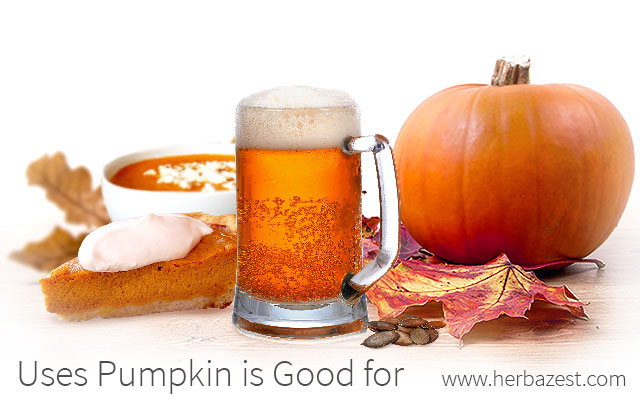Most Common Uses for Pumpkin
The pumpkin is a valuable and versatile crop. Because it has been cultivated for several thousands of years, there is now a large variety of practical and unique uses of pumpkin.
Crafts
Pumpkins are commonly associated with the spooky jack-o-lanterns that children make with their families to light the night every Halloween. Because of their hard outer skin and soft, fleshy innards, pumpkins can be carved, then scooped out, and later preserved on front porches in the days leading up to the Halloween festivities. Since pumpkins may vary drastically in their color, size, shape, and general appearance, some will make good jack-o-lanterns, while others are good for decorative and ornamental use in centerpieces, as well as on windowsills.
Food Industry and Culinary Uses
The seeds and flesh of pumpkins are perhaps the most important - and certainly the most popular - parts of the pumpkin used for culinary purposes. Low in fat and high in protein, pumpkin seeds can be roasted for a quick and satiating snack, sprinkled over salad, or mixed into a number of different soups and stews. The flesh of a young pumpkin is good for savory vegetable dishes, while the mature fruit is used in certain breads and desserts.
The pumpkin fruit is widely used in the food and drink industry to provide new flavors for beverages, especially craft beers and other autumn-themed drinks.
While both are edible, the preparation of pumpkin leaves and flowers is a lesser-known culinary use of pumpkin. The leaves are dark green and high in iron; cooking them will help to bring out their flavors. The flowers may be sprinkled over salads, pastas, and grains for a lighter meal.
Less Common Uses of Pumpkin
Traditional pumpkin uses will vary largely according to time period and other cultural factors. Here are some of the less common examples of what pumpkins are used for.
Medicinal and Therapeutic Uses
Pumpkin has long been used to treat common ailments, such as bloating, dehydration, fatigue, infertility, and certain skin conditions. Consuming it and topically applying its flesh are among the most popular medicinal uses of pumpkin, while mixing the roasted or ground seeds with other ingredients is also common. Moreover, the oil extracted from the pumpkin seeds can be used to create capsules. Though less common in the U.S., pumpkin leaves have been used in traditional Ayurvedic medicine as a pain reliever.
Cosmetic Uses
The pumpkin flower has found purpose in a number of fragrances and cosmetics due to its sweet and delicate aroma. Pumpkin seed oil is high in antioxidants like vitamin E, which aids in cell regeneration to help protect skin cells from damage. Pumpkin seed oil-based creams and moisturizers smooth the skin's appearance, and may be a positive addition to skincare regimens. Pumpkin pulp can also be mixed with honey, oils, and other natural ingredients for a rejuvenating homemade facial mask.
Other Uses
Native Americans used pumpkins to meet a number of home décor needs. Dried strips of pumpkin were often used to weave mats during ancient times. They also used the thick shells as carrying containers. This method could be adapted for vases and other modern DIY projects.
Historical knowledge and scientific research has generally determined the current depth of understanding about certain pumpkin uses. The gathering of new information has made it possible to further explore their heart-healthy, immune-boosting properties and all of their glorious complexity. What remains clear is that for thousands of years now, the use of pumpkin has proven a reliable food source and effective medicinal herb.
Sources
- European Food Research & Technology, Variability of vitamin E content in pumpkin seeds (Cucurbita pepo L), 1996
- National Institutes of Health, Office of Dietary Supplements, Vitamin E
- Nutrition Research Reviews, Medicinal and biological potential of pumpkin: an updated review, 2010
- University of Illinois, Extension Office, Pumpkins and More
- USDA Nutrient Database
- Power Foods, pp. 25, 57, 358, 371
- Rosemary Gladstar's Herbal Recipes for Vibrant Health, pp. 239, 241, 253, 358
- Kew Royal Botanic Gardens, Cucurbita pepo (pumpkin)




